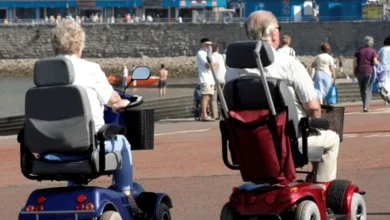The Science Behind Braces for Underbite and How They Work to Correct Jaw Alignment

Braces have long been a staple of orthodontic treatment. They correct everything, from crowding to misaligned bites.
However, when it comes to underbites the mechanisms can become more complex. So here’s a look at the anatomy of underbite correction with braces. Let’s take a look at how braces for underbite work.
Anatomy of an Underbite
Before we talk about braces, it’s crucial to understand what an underbite is. An underbite, or Class III malocclusion. It is a condition where the lower teeth and jaw extend out over the upper teeth.
It can lead to various issues, such as difficulty chewing, speech impediments, and even jaw pain. The root cause can stem from genetics. It can also stem from early childhood habits like excessive thumb sucking or prolonged bottle feeding.
Braces and Underbites: A Mechanical Miracle
The primary goal of underbite braces is to apply consistent pressure to the misaligned teeth. It gently moves them into their proper positions while adjusting the jawline.
This process stimulates bone growth. It gradually shifts the teeth. So it allows the upper jaw to regain dominance in the bite.
The science is quite simple yet extraordinary. For example, an Invisalign underbite applies a steady force over time. This controlled micro-injuries to the bone around the teeth.
The body then responds by remodeling the bone. It enables the teeth to move into the desired position.
The Armory of Orthodontics
When it comes to correcting underbites with braces, orthodontists have an arsenal at their disposal. Traditional braces are highly effective. They consist of metal brackets adhered to each tooth with a wire running through them.
However, modern advancements have introduced clear aligners that offer a more aesthetically appealing option. But given this, you might be asking, “Can Invisalign fix underbite?”
The answer is yes. Invisalign can treat mild to moderate underbites by using a series of custom-made clear aligners. These aligners gradually shift the teeth into their proper positions, correcting the underbite.
Step-By-Step Underbite Journey
Getting braces for an underbite is a comprehensive process. It begins with a consultation where the orthodontist assesses the severity of the underbite. Then, they create a personalized treatment plan.
X-rays and impressions are taken, which help in creating a 3D model of your bite. Once the braces are fitted, regular adjustments ensure the treatment plan is on track. Appointments are typically scheduled every 6-8 weeks.
What About Overbites?
While underbites require the upper jaw to regain dominance, overbites are the opposite. In an overbite, the upper teeth overlap with the lower teeth. This leads to a “bulldog” appearance.
Braces can also correct overbites by moving the upper teeth backward. This allows for proper alignment with the lower teeth.
Treating overbite is a complex process. But with the right orthodontist and proper treatment plan, it is possible to achieve a balanced and healthy bite.
Braces for Underbite Are Worth the Investment
Investing in braces for underbite correction is not just a commitment to enhancing one’s smile. It’s also an investment in overall health and well-being.
The process can be intricate and requires time. However, the outcomes are invaluable.
So if you’re struggling with an underbite, don’t hesitate to consult an orthodontist. They can help determine the best treatment plan for you and guide you through your underbite journey with braces. Remember, a beautiful and healthy smile is just around the corner!
Did you find this article helpful? If so, check out the rest of our site for more.






